'Small miracles' and a long recovery: After skydiving accident, this NJ man is walking again
Everything was going fine as Ian Azeredo plummeted toward the ground from 13,500 feet.
The exit from the plane was routine. The freefall went smoothly. The parachute opened at 3,500 feet with no problem.
It was July 4, 2019, and Ian was enjoying his third skydive of the day over Sussex Airport with a few buddies — one of more than 700 jumps he had under his belt.
But with 400 feet to go, sudden turbulence hit Ian, preventing him from turning toward the drop zone. He was now falling toward an airplane hanger and powerlines.
Ian made a sharp left to avoid everything, but in doing so picked up speed and crashed to the ground at almost 70 miles per hour. He bounced 67 feet until he came to rest near a group of startled customers preparing to take their first tandem jumps.
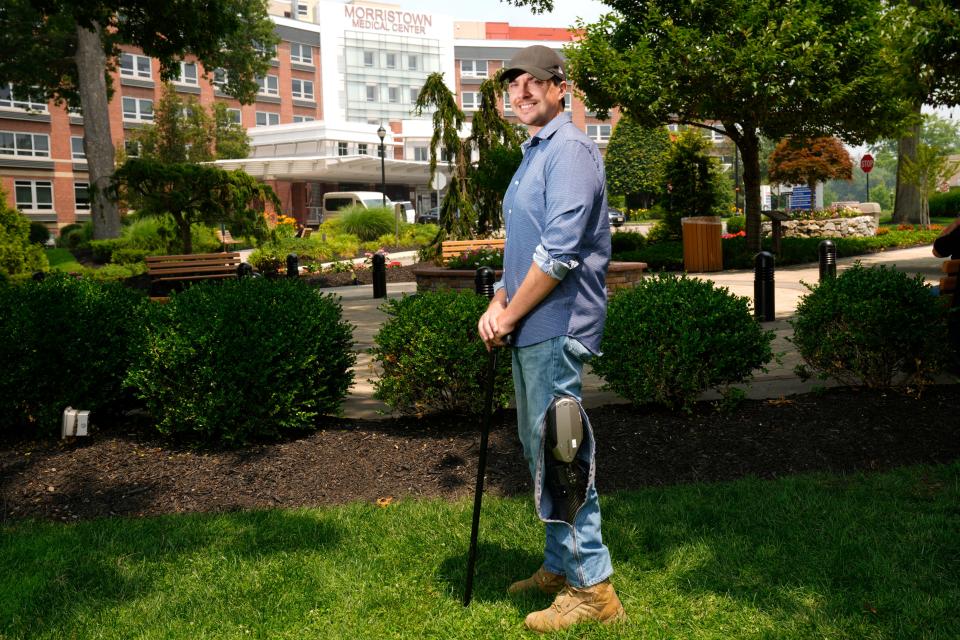
Ian thought he should have been dead. So did the medivac crew, the trauma surgeons, the nurses and everyone else who saw his shattered, bleeding, broken body that day. No one walks away from an accident like this.
But Ian did.
After more than a dozen surgeries, 300 days in the hospital, a two-month medically induced coma and years of hard work, Ian is walking again.
This is a story of luck, perseverance, a dedicated medical team and "a bunch of small miracles that added up to a big one," as Ian calls his recovery.
"You always hope to give everyone who comes in here a chance, but patients with his injuries don't often make it," said Dr. Louis DiFazio, a trauma surgeon who treated Ian for months at Morristown Medical Center. "Everything went right for him. And his will to get better just took over."
700 jumps, one crash
Skydiving had long been a part of Ian's life. So much so that he and his wife, Linda, jumped out of a plane on their first date. After they married and settled in Ringwood, it continued to be their go-to activity. They skydived locally and planned vacations around it.
"It always felt like a natural place for me to be," said Ian, 36, an engineer who designs helicopter equipment for the U.S. Air Force, among other clients. "I felt I was no longer limited by what I could do on the ground."
Ian was so experienced he became certified and was using smaller, more nimble parachutes for better control, but also made descending much faster. "The faster the parachute, the less time it takes to get to the ground, and likewise the less time to adapt to problems in the air," Ian said.
On the day of the crash, the jumps were just some fun activities with friends to kill time before kicking back for the rest of the July 4th holiday.
When Ian crashed, he was somehow still conscious but in shock. He told those gathered around him that he was fine and just needed to “sleep it off in my truck.”
The reality was Ian’s pelvis was shattered, he had compound fractures in both legs, several organs were badly damaged and he was bleeding internally.
The first miracle came immediately. Ian had landed only a few hundred feet from a medivac helicopter and its medical crew. About 20 minutes after his crash, he was loaded onto the helicopter. About 20 minutes after that, he was being wheeled into Morristown Medical when he went into cardiac arrest.
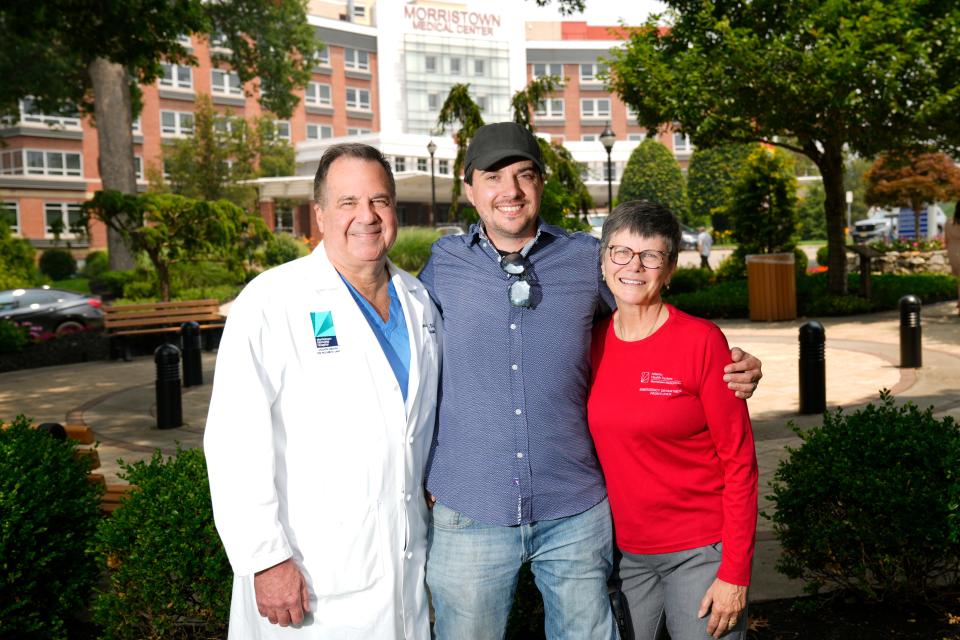
Ian was still within the "golden hour" when immediate medical treatment and surgery can lower the risk of death from a traumatic injury. As the medical team worked to stabilize him, Ian remained conscious, squeezing a nurse's hand.
Meanwhile, Linda was 3,000 miles away on a cruise with her parents off the coast of Alaska. She received a call that Ian was injured and might not recover. It took her three days to get back to New Jersey.
He was put into a medically-induced coma to avoid any movement that could further damage internal organs. Even days after the accident, doctors were still not sure he would survive, given the number of injuries and their severity.
"He had lost so much blood and required so many transfusions," DiFazio said. "We were really concerned he wasn't going to make it."
Debating whether to amputate a leg
Ian came out of the coma in late August. While in intensive care on pain medication, he was often delirious, trying to tear oxygen tubes from his nose believing he was flight training in the Air Force, using an oxygen mask in the cockpit.
Once he regained his mental composure, other parts of the recovery became grueling. He wasn't able to sit up until December or get into a wheelchair until January. He would travel 50 feet in the chair and be wiped out.
There were multiple follow-up surgeries. Damaged pieces of leg muscle had to be removed. Infection was a constant worry. Ian's liver was damaged, and at one point his skin turned so yellow he said he resembled "a Simpsons character."
"My mentality was just to move forward after every time something went wrong," he said of his recovery. "I had to make this second chance worth it."
Ian couldn't move his left leg due to extensive nerve damage. Life in a wheelchair loomed. There were serious discussions between Ian and his doctors about whether he should have the leg amputated since a good right leg and a prosthetic left leg would allow him to walk again.
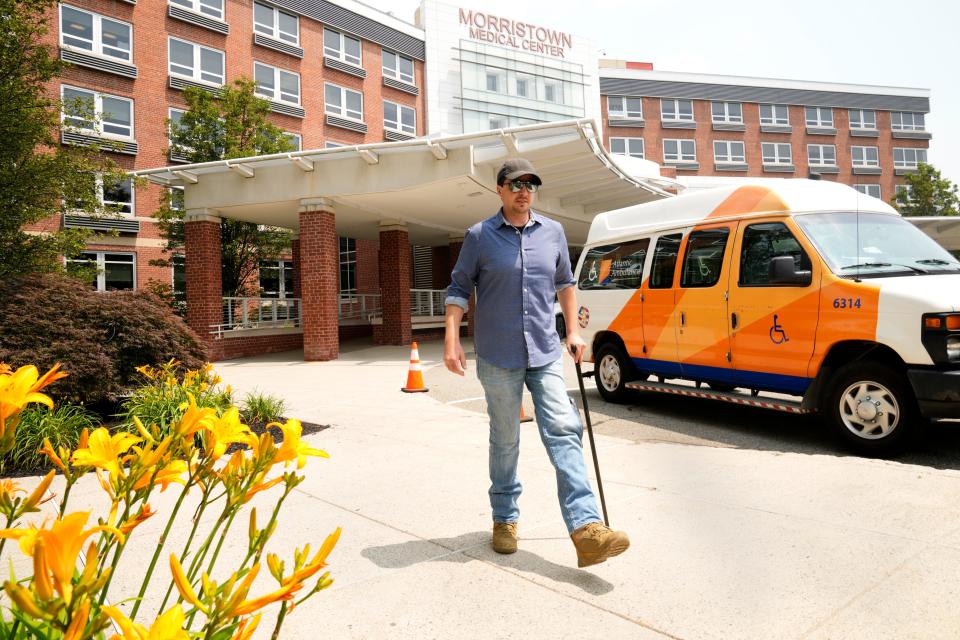
Another miracle came in the form of Catherine Pocoroba, a physician assistant who came to Ian one morning with printouts about exoskeleton suits that help some people who are paralyzed walk again. It gave Ian hope and he refused to get his left leg amputated.
After a stint at a rehab center following his discharge from Morristown at the start of the COVID-19 pandemic, Ian returned to a home that had already been retrofitted by friends and co-workers who installed a ramp, widened doorways and retrofitted the bathroom to accommodate his wheelchair.
About two years after the accident came a "game-changing" moment. Ian received a device called a C-Brace — a hydraulic exoskeleton device placed over the leg that helps people with certain forms of paralysis to stand and walk.
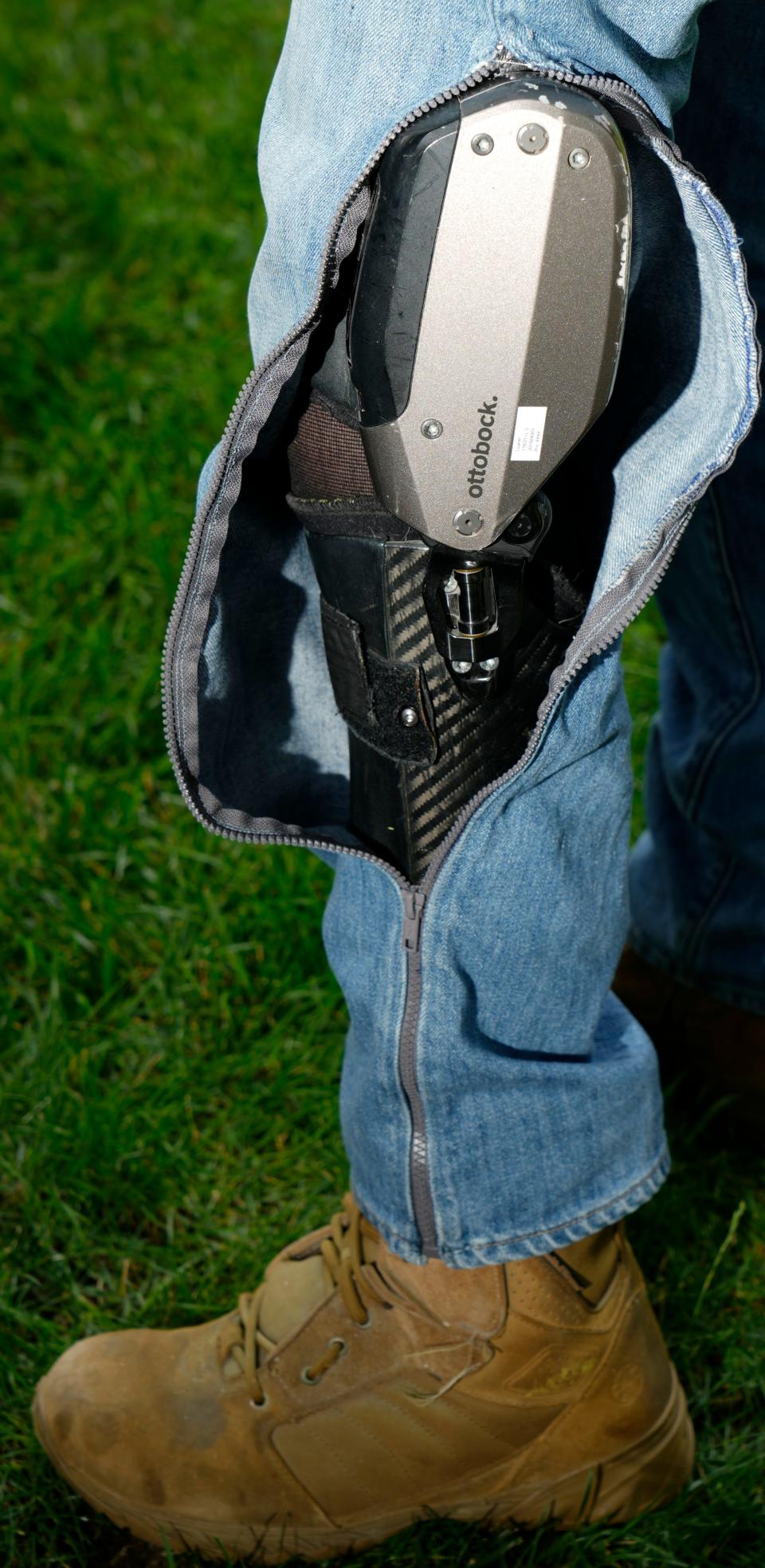
Ian walked a quarter mile the first day. The next day he walked a half mile. After years of therapy and practice, Ian now walks with only a slight limp while aided by the C-Brace and a cane.
"It was challenge after challenge," DiFazio said. "He just had this strong desire to succeed. It was like every setback was a battle for him to get back to where he used to be."
The next adventure
Ian regularly attends Morristown Medical Center's Thrive meetings, a virtual support group for those who have been treated for severe injury or illness.
Ian and Linda adopted a dog, Otter, soon after he got home. He eventually returned to work at Breeze-Eastern, an aerospace company in Whippany. He has given up skydiving to "leave the good memories in the past." But he has a new adventurous hobby: scuba diving.
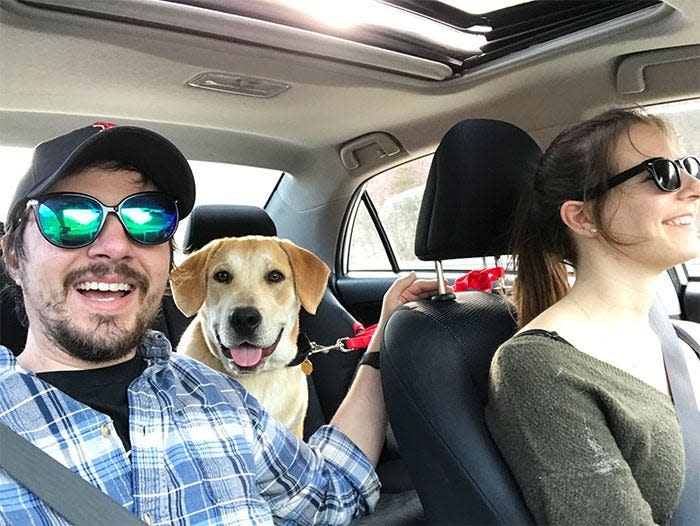
Ian's big project is using his engineering skills to rebuild a 1946 Ercoupe plane he had towed down from Connecticut. It was last flown in 1969 and is a perfect fit for someone in Ian's condition: It has no rudder pedals.
Ian has spent about 18 months working on the plane and figures he needs two more years before the Ercoupe would be ready to fly.
Last week, he went back to Morristown Medical Center and was greeted by a dozen staffers — from doctors to nurses to housekeepers — he had befriended over the course of his 300-day hospital stay.
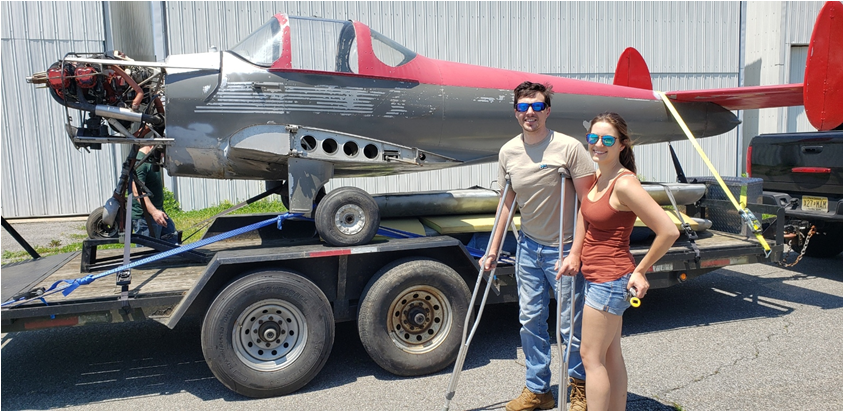
At first some didn't recognize Ian because of how far he had progressed since discharge. Pocoroba, the physician assistant who first told him about exoskeletons, kissed him on the cheek. Others whipped out their smartphones for video calls between Ian and staffers who couldn't be there.
Before his restored Ercoupe ever takes its first flight, he wants everyone who treated him at Morristown Medical to sign the fuselage like they would a cast.
"They put in so much work to save my life," he said. "You owe it to these people to come back as far as you can."
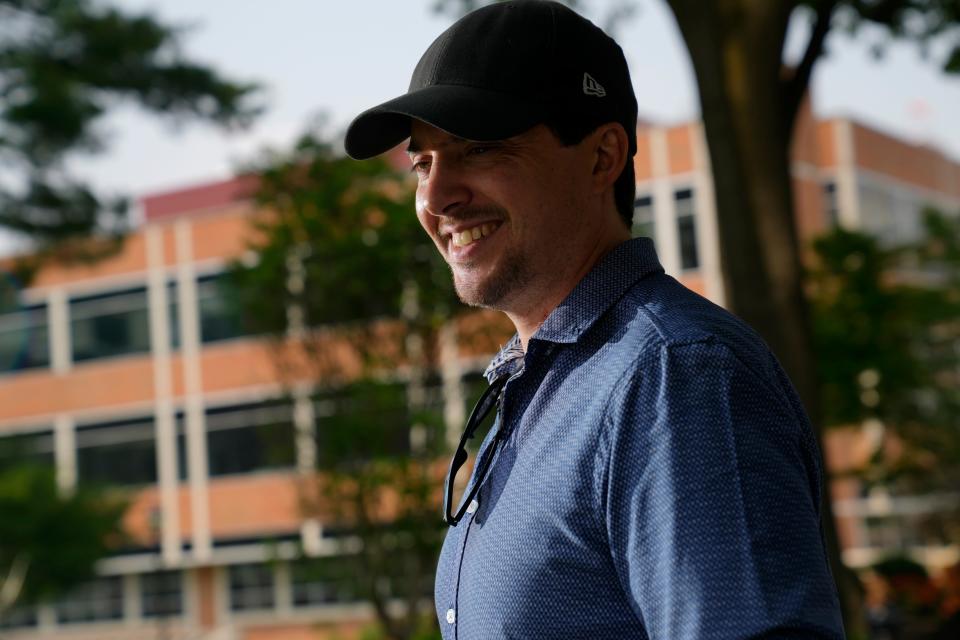
This article originally appeared on NorthJersey.com: After skydiving accident and 12+ surgeries, he's walking again

